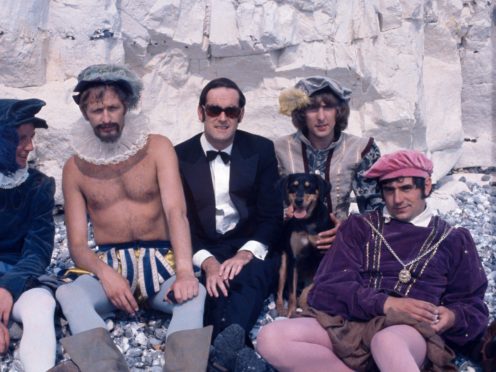A recently unearthed archive of Monty Python material has been released to celebrate 50 years of the comedy troupe.
The six-strong group first appeared on the BBC on October 5 1969 and went on to have global success with their often surreal comedy.
Photos and documents from the BBC archive, covering the early days of Python, have been restored.

The images depict John Cleese, Terry Gilliam, Eric Idle, Terry Jones, Sir Michael Palin and the late Graham Chapman revelling in absurd costumes on set.
The fully-restored photos show the comedy team filming sketches including The Ministry Of Silly Walks.
Documents reveal doubts about the show among the BBC hierarchy, who took exception to the constantly changing and “peculiar” titles of the planned programme.
But a test audience was found to enjoy the “delicious sense of the ridiculous” displayed by the troupe.
Shane Allen, BBC controller of comedy commissioning, said: “These archives are comedy history holy grails.
“They highlight that longstanding BBC reputation of being the vital place that champions pioneering new talents.

“The Pythons tore up the rule book of comedy grammar, conventions and traditions, but thankfully the support for creative freedom won the day and has certainly paid off in the long run as audiences continue to celebrate and revere their enormous impact on comedy.”
Photos of the group show them in various outfits, including an Attila the Hun costume, crinolines, giant shoes and military uniform.
In recognition of the programme’s impact 50 years on, BBC History is using the groundbreaking sketches as material to teach young people how to write their own comedy.
Robert Seatter, head of BBC History, said: “When Monty Python’s Flying Circus began in 1969 it radically changed the face of TV comedy.
“By introducing these famous Python sketches to today’s young people, we want to change it all over again – with the same spirit of surreal invention.”
Archive material spans the period from 1969 to 1974, prior to the group’s first feature film, Monty Python And The Holy Grail.
